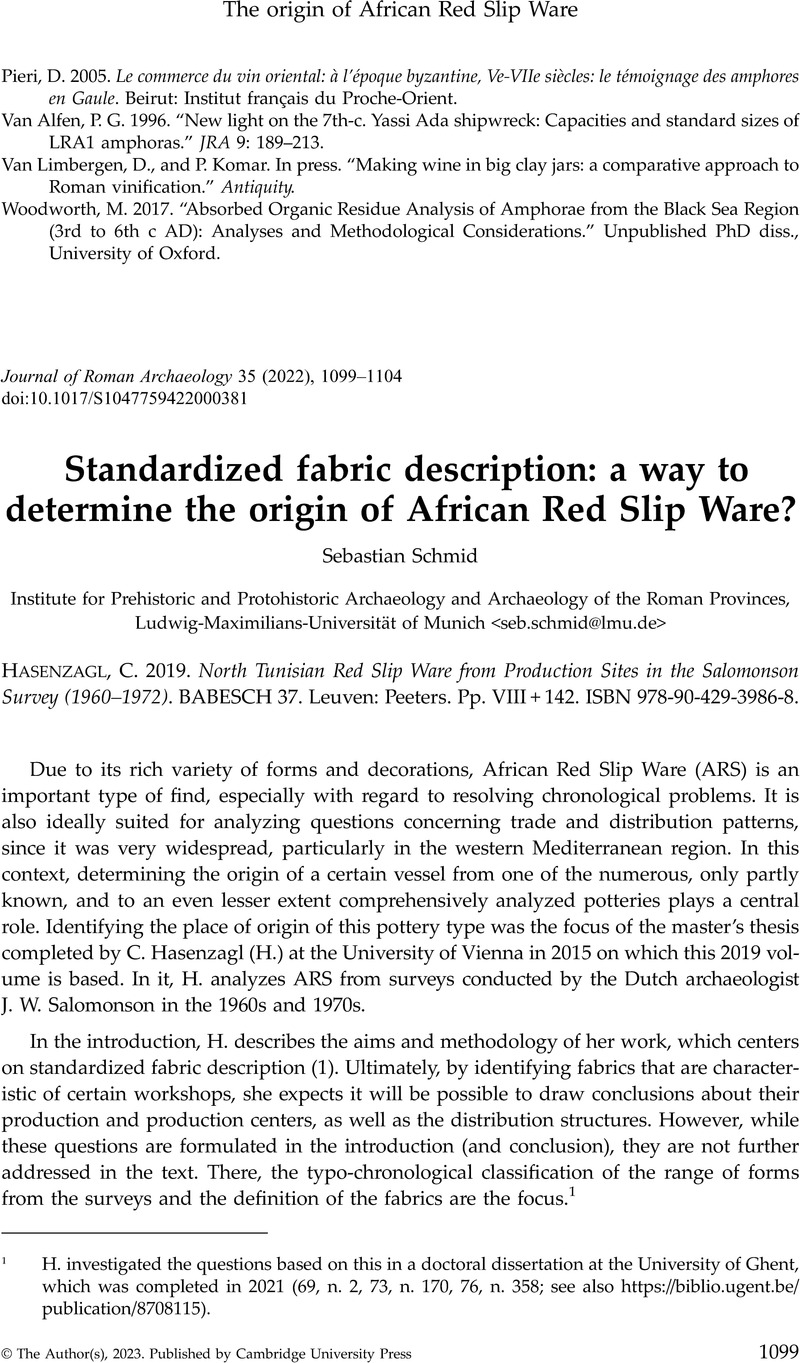Barraud, D.,
Bonifay, M.,
Dridi, F., and
Pichonneau, J.-F.
1998. “
L'industrie céramique de l'Antiquité tardive.” In
Oudhna (Uthina). La redécouverte d'une ville antique de Tunisie, ed.
Ben Hassen, H. and
Maurin, L.,
139–67. (Ausonius Institute) Mémoires 2.
Bordeaux, Paris and Tunis:
Ausonius and De Boccard.
Google Scholar 